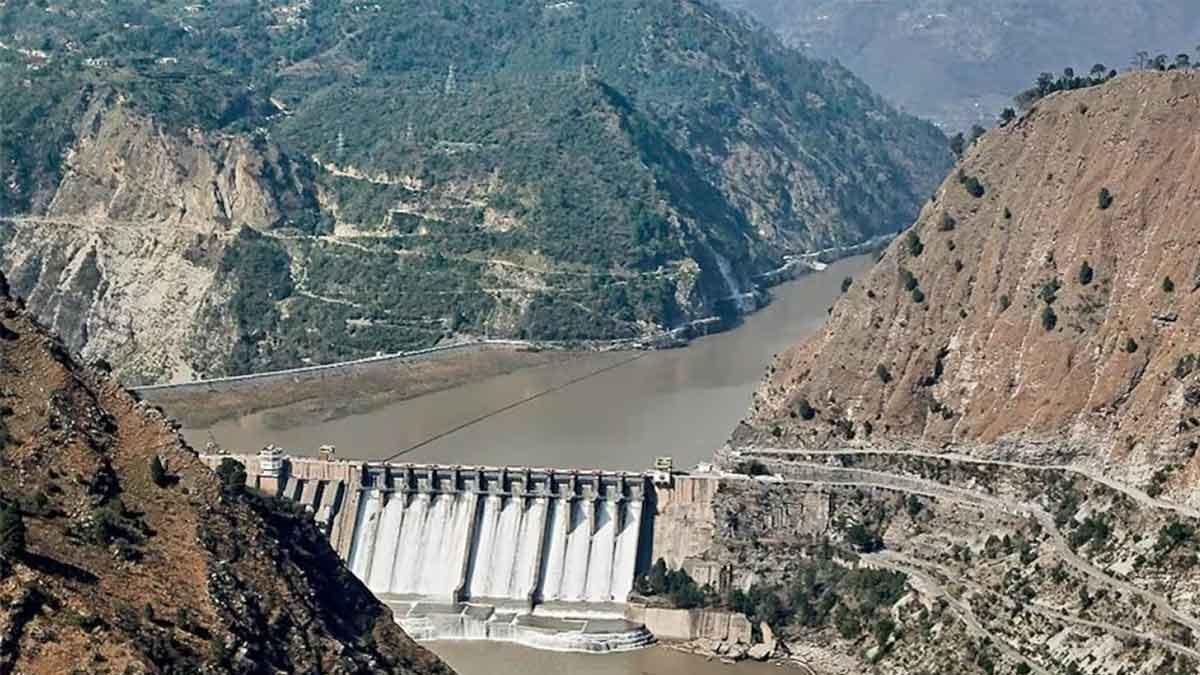A sharp decline in water discharge from Pakistan's larger dams in the Indus basin has caused alarm in Islamabad and increased tensions with New Delhi, which fears increasingly worsening water shortages could turn into a critical flashpoint between the two nuclear-armed neighbors.
Official Pakistani statistics cited by a News18 report indicate discharge from critical reservoirs has fallen dramatically, with a near 15 percent fall over the past week compared to the same period a year ago.
This move comes in the aftermath of India's recent attempt to increase control over the flow of western rivers, practically suspending the Indus Waters Treaty (IWT)—a step which has fueled water disputes between the countries. This intensification comes after the April 22 terror attack at Pahalgam in which 26 civilians were killed.
According to the report, on June 5, the outflow from Punjab’s dams was recorded at 124,000 cusecs, a decline from 144,000 cusecs on the same day in 2024. Reservoir levels nationwide are approaching critically low marks. For instance, at the Tarbela Dam in Khyber Pakhtunkhwa, the water level of the Indus River has dropped to 1,465 metres, just above the dam’s dead level of 1,402 metres. Equally, Punjab's Chashma Dam measures 644 metres, being just six metres above its dead level, whereas Mirpur's Mangla Dam on the Jhelum River measures 1,163 metres with a dead level of 1,050 metres.
Note also that when water levels dip below these dead levels, gravity-fed water release is no longer possible, highly limiting water access and affecting agricultural irrigation.
The News18 report brings to the fore a particularly shocking scenario at Marala in Sialkot, where the flow of the Chenab River has plunged almost 90 percent within a week—down from 26,645 cusecs on May 28 to a paltry 3,064 cusecs on June 5.
One of the top officials in the government of Pakistan, as cited in the report, warned that this will most probably have a ruining effect on the late Kharif cropping period, which lasts from June to September.
Adding to the crisis, the Pakistan Meteorological Department has predicted a serious heatwave from June 8. Heat is anticipated to rise 5°C to 7°C above normal over areas such as Punjab, Islamabad, Khyber Pakhtunkhwa, Kashmir, and Gilgit-Baltistan, increasing water demand and putting additional pressure on already exhausted resources.
Islamabad has accused New Delhi of intentionally limiting the flow of the western rivers—the Indus, Jhelum, and Chenab—contrary to the Indus Waters Treaty.
Pakistan has, over the past few weeks, dispatched four official diplomatic letters to India, requesting resumption of treaty protocols and putting an end to what it refers to as unilateral limitations on water flows.
India, however, has held firm, insisting that the IWT is de facto suspended in light of national security interests and reaffirming its position that "water and blood cannot flow together."
Addressing a rally in Gujarat on May 27, Prime Minister Narendra Modi defended India’s recent measures, arguing that the country had long neglected its rightful share of water due to decades of poor infrastructure maintenance. “We have not done much yet. We just opened the dam a little and started cleaning it. They are terrified,” PM Modi remarked.
He also cited long-term operational failures at dams in the past 60 years, where silt buildup and poor management had cut water flows to as little as 2 to 3 percent of their full capacity. "The gates weren't opened for 60 years," he said, suggesting that recent measures were both necessary and warranted.
The Indus Waters Treaty, concluded in 1960 under the aegis of the World Bank, assigns the eastern rivers—Beas, Ravi, and Sutlej—to India and the western rivers to Pakistan.
India has limited rights for non-consumptive use of the western rivers, including hydropower, irrigation, and storage, within well-defined limits under the treaty. The treaty also provides provisions regarding construction of dams, regulation of flow of water, and means for the resolution of disputes.
Read also| Watch| Israeli Commandos Halt Gaza-Bound 'Freedom Flotilla' Carrying Greta Thunberg
Read also| Germany Reaffirms Firm Backing for India’s Zero-Tolerance Stance on Terrorism


















